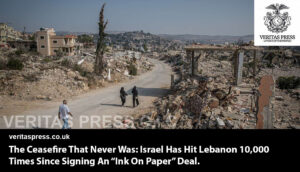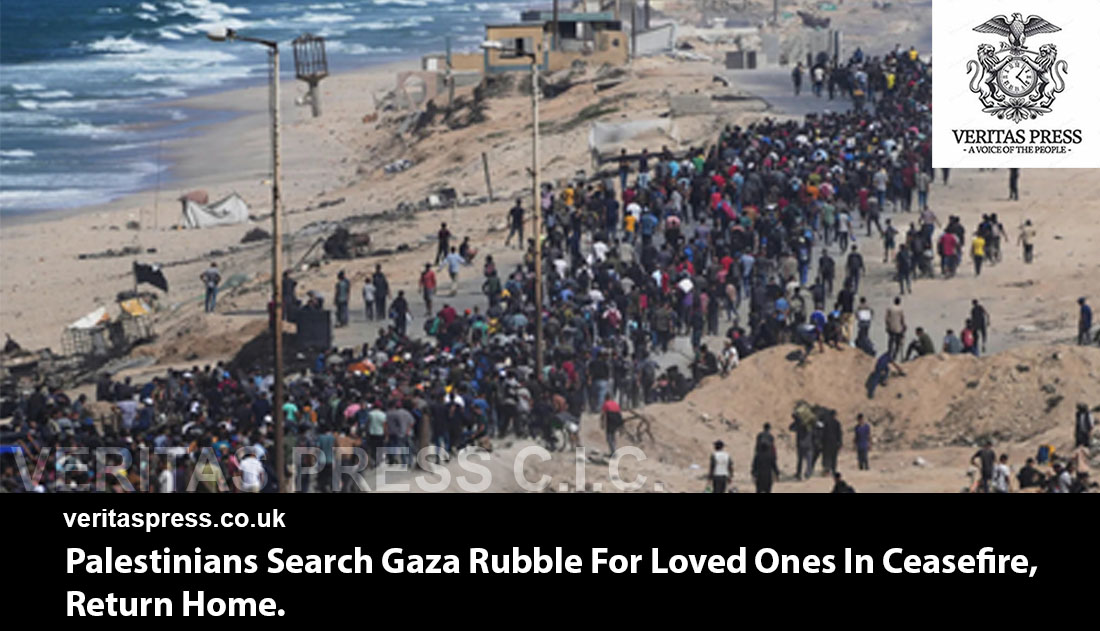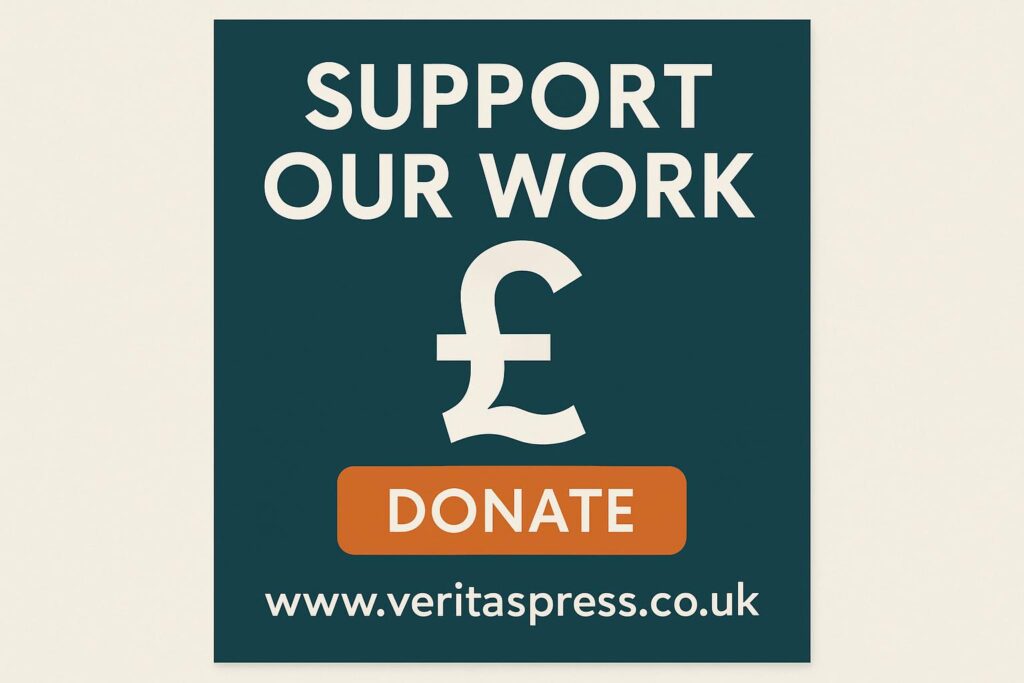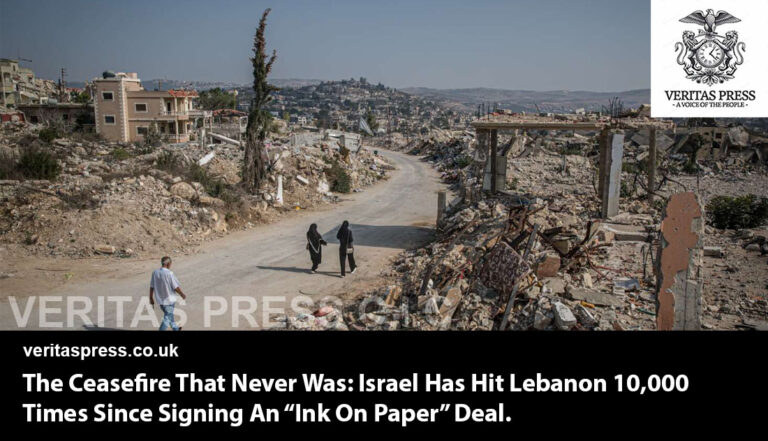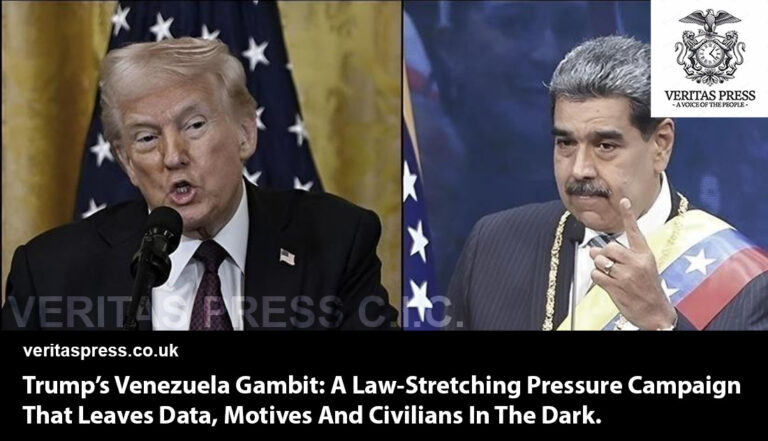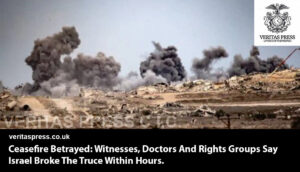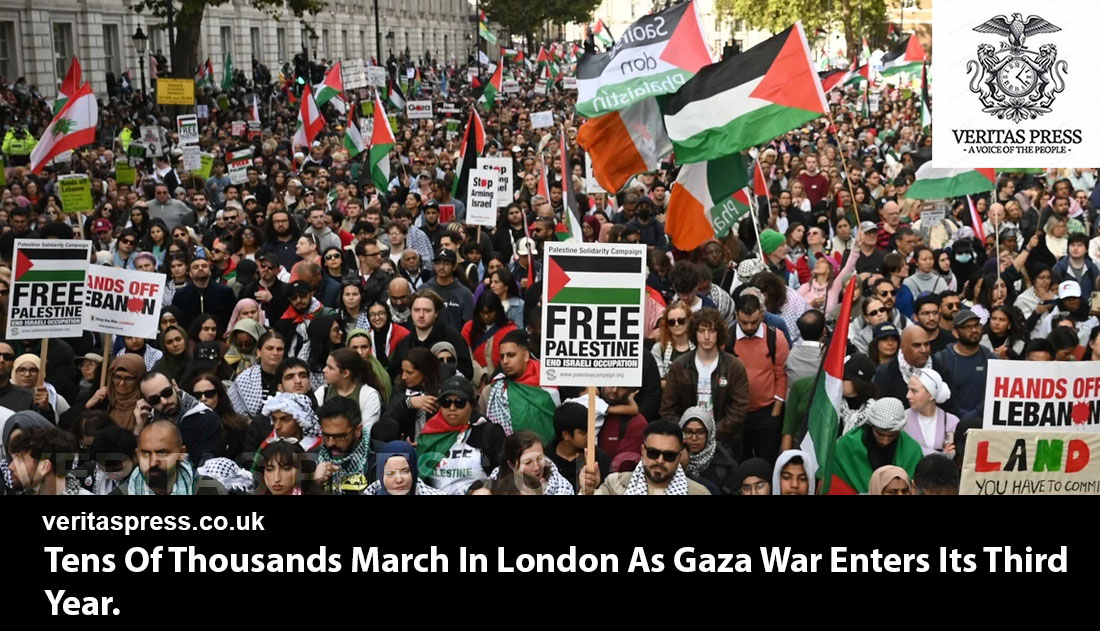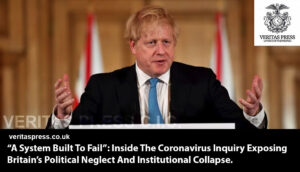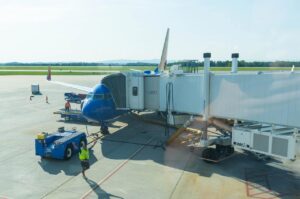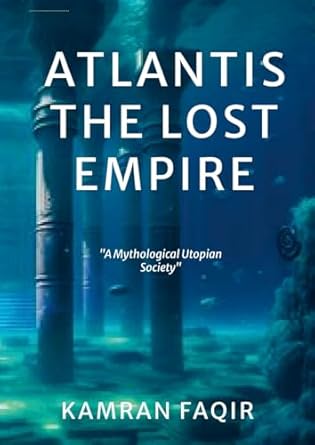Displaced Palestinians return to the ruins of homes, driven by loss, defiance and the will to rebuild.
GAZA. OCTOBER 11, 2025. — In the fragile pause of warfare, displaced Palestinians are returning to territories they once fled, stepping over broken concrete, jagged rebar and buried lives. They come driven by grief, by memory, and by an unyielding resolve to reclaim their place on their land.
Recovering The Dead: Numbers, Horror, Uncertainty.
Under the truce, rescue teams have begun to access formerly inaccessible zones to recover bodies, clear rubble, and look for survivors. According to Palestinian news agency Wafa, at least 135 bodies have been pulled from the ruin-strewn landscape across Gaza.
Many more were brought to medical facilities: 43 bodies to al-Shifa Hospital and 60 to al-Ahli Arab Hospital in Gaza City, along with further arrivals at hospitals in Nuseirat, Deir el-Balah, and Khan Younis.
In parallel, 19 people were reportedly killed in Israeli airstrikes on Friday, with one more succumbing to earlier wounds. Among those struck was the Ghabboun family: 16 members perished when their home south of Gaza City was bombed. Other fatalities occurred in Sheikh Radwan and near Khan Younis. It remains uncertain whether all those strikes preceded the formal start of the truce at noon local time.
Subsequent reports broaden the casualty count: Gaza health authorities now say that 155 bodies have been recovered overall, including the earlier 135, among them 19 new victims. Hospital deliveries tally: 43 to Al-Shifa, 60 to Al-Ahli, 4 to Al-Awda (Nuseirat), 16 to Al-Aqsa Martyrs (Deir al-Balah), and 32 to Nasser Hospital (Khan Younis).
These figures offer only a partial view. Thousands are still missing, trapped beneath ruins, unaccounted for. The process of identification is slow, painful, and often incomplete.
The Return: A Trek Into Ashes.
With Israeli forces now partially withdrawing and key routes reopening, such as Gaza’s al-Rashid Street, tens of thousands of Palestinians are making the arduous journey back home.
Al Jazeera’s Tareq Abu Azzoum, on the road from Nuseirat toward Gaza City, described a procession of “children, women, elderly, cars, vans, donkey carts loaded with furniture” moving north. Some dismantle makeshift tents just to reset them atop the ruins of their demolished homes.
That return, while historic in its scale and significance, is deeply symbolic and fraught. “This return is seen as historic, but it needs to be accompanied by concrete steps to alleviate the humanitarian crisis,” Abu Azzoum said.
In Deir el-Balah, correspondent Moath Kahlout noted the urgency of providing emergency shelters. “They march toward the unknown with what little they have,” he said.
Gaza City lies in ruin. According to reporting from Le Monde, more than 78% of buildings are destroyed or badly damaged, over 88% of businesses ruined, and utilities such as electricity and clean water have vanished. Aerial and satellite data indicate tens of millions of tons of debris, pervasive contamination, and environmental damage on a catastrophic scale.
This moment of return is not a return to normalcy. It is a return into uncertainty, displacement, and trauma.
Faces Of Return: Loss, Defiance, Hope.
Naim Irheem, dismantling his tent by car, said:
“I’m going to Gaza City even though there are no conditions for life there, no infrastructure, no fresh water. Everything is extremely difficult … but we must go back. My son was killed, and all my daughters were wounded. Still, I want to return. We’ll pitch a tent and live in it, however it can be done.”
For many returnees, the landscape of home is unrecognisable. Still, returning becomes an act of defiance.
Aisha Shamakh, having survived the war, told reporters:
“We want to go see our homes, our homes that were destroyed at the start of the war. Floors have fallen on our children… but I can’t even describe to you the joy [of the ceasefire].”
In Gaza City, Al Jazeera’s Ibrahim al-Khalil witnessed “exhausted faces filled with both grief and joy.” Many simply said: “We don’t know if our homes are still standing, or reduced to rubble, yet we return clinging to hope.”
Ahmed Abu Shanab, returning north, reflected: “We suffered a lot. We didn’t have enough space, and we literally could not sleep.”
Maryam Abu Jabal expressed the fear in many hearts: “We returned to the unknown, and we don’t know if our homes still exist. We hope to God that our home is still standing.”
In Sheikh Radwan, Mohammed Sharaf surveyed what remains: “Everything has changed. We have returned to a disaster we cannot comprehend. We thought we would leave for a few days; now we’re back, and we have found nothing.”
Through all this, the will to return pulses: the simplest act of presence becomes resistance against erasure.
Breakdowns At The Truce: Violence, Scepticism, Gaps.
Despite the ceasefire’s nominal timing, violence continues to cast doubt on its durability. Early this morning, it was reported that Israeli forces shot an elderly man in Al-Qarara. The incident was reported by the Al-Aqsa Martyrs Hospital.
Media outlets report that 19 Palestinians were killed across Gaza despite the declared pause. Gaza health authorities attribute this to residual airstrikes or delayed operations.
Some of those fatalities overlap with the earlier recovered dead (i.e. recovered from before the pause), but the continuation of hostilities soon after the ceasefire’s start sows mistrust.
Israel, while withdrawing from some urban zones, retains control over more than half of Gaza’s territory and insists that Israeli troops will remain in place until Hamas is disarmed. Meanwhile, Hamas strongly rejects external oversight or governance control.
One essential pillar of the truce is a hostage-prisoner exchange: Hamas is to release 20 Israeli hostages, and Israel will free about 1,950 Palestinian prisoners. The list did not include specific well-known detainees such as Marwan Barghouti, while the rest of the prisoners, over 11,000 Palestinians, are still held by Israel.
From the vantage of humanitarian and reconstruction groups, the pause must lead to more than silence. Aid agencies demand unfettered access, border openings, and logistical guarantees. Israel has pledged to allow 600 aid trucks per day, but NGOs warn that the need is vastly greater.
The Scale Of Devastation & The Road To Reconstruction:
The war’s physical toll is immense. Satellite and on-the-ground assessments estimate that 69% of Gaza’s structures are destroyed or heavily damaged. The UN estimates that removing more than 50–60 million tons of rubble will be a multiyear, multibillion-dollar undertaking, delicate and dangerous, complicated by unexploded ordnance. In a published figure, it could take over 350 years to reconstruct Gaza if the blockade and constraints persist.
The International Criminal Court has also weighed in. It is calling for an investigation into war crimes and genocide allegations, including the use of starvation as warfare. Israel denies these charges.
Meanwhile, ambitious reconstruction ideas have been floated. One such is Trump’s GREAT Trust (Gaza Reconstitution, Economic Acceleration and Transformation), a U.S.-led, multilateral trusteeship plan to govern Gaza post-disarmament. It envisions rebuilding infrastructure, a tram system, smart zones, even ports and parks. Critics say it risks imposing external control over Gaza’s future and undermining Palestinian sovereignty.
Return As Resistance, Return As Reckoning:
For those stepping back into Gaza, return is not simply about homes. It is an assertion of enduring identity and presence, a rejection of displacement as a permanent condition. Every footprint in shattered streets, every unmarked grave uncovered, is a reminder that these lands remain inhabited, even under siege.
Still, the return is laced with trauma. Many will camp in tents, without electricity or sanitation; many will not recover what was lost. Many more souls remain unaccounted for.
In the fragile promise of the ceasefire, Gaza’s people confront not only the ruins of buildings, but the ruins of systems, water, power, health, governance, and must rebuild them anew. The world watches, but whether it acts meaningfully in the weeks ahead will help determine whether this return is a moment or a foundation for something more lasting.
Conclusion: The Ceasefire Illusion.
As the dust settles and survivors crawl back through the skeletal remains of Gaza’s neighbourhoods, the ceasefire exposes a truth far deeper than a pause in gunfire: this is not peace, it is the suspension of an ongoing catastrophe.
What Israel calls “security operations” has, in reality, become the systematic dismantling of an entire society. Two years of siege and bombardment have turned Gaza into a graveyard of families, schools, and hospitals, erasing not only infrastructure but the very possibility of normal life.
Even now, despite the ceasefire being formally enforced, Israeli soldiers and occupation forces continue to kill civilians, shattering any illusion of restraint. The reported shootings of unarmed Palestinians, including an elderly man in Al-Qarara, along with continued air strikes that claimed 19 lives after the truce began, demonstrate that the so-called agreement exists only on paper. In practice, Israel has shown no intention of honouring the ceasefire, rendering it null and void before it has even taken hold. The violence persists not as an aberration, but as policy.
Behind every destroyed home lies a trail of decisions, from military command rooms in Tel Aviv to political offices in Washington, that enabled the machinery of annihilation to continue. The so-called “reconstruction phase” touted by the Trump administration’s peace plan risks institutionalising that domination under the guise of recovery, turning Gaza into a fenced-in experiment in externally managed survival. Talk of “economic acceleration” or “smart development zones” sounds obscene against a landscape where families dig for bones with their bare hands.
International law has been tested and found wanting. Investigations by UN bodies, the ICC, and human rights organisations accumulate in reports and resolutions, but without enforcement, they serve only as moral postscripts to atrocity. States that armed and shielded Israel from accountability now posture as donors for Gaza’s reconstruction, erasing the line between complicit and humanitarian. There can be no genuine rebuilding without justice, no reconstruction without sovereignty, and no peace built atop impunity.
High in the leadership of Israel, voices are heard not of restraint, but of absolute possession. Bezalel Smotrich, openly calling to “occupy the Gaza Strip” and “displace half its population within two years,” frames occupation and displacement not as collateral damage but as central war goals. Itamar Ben-Gvir urges “voluntary migration” of Palestinians, resettlement by Israeli settlers, and military rule over Gaza. Meanwhile, Benjamin Netanyahu declares Israel has “no intention of permanently occupying Gaza or displacing its civilian population,” a statement deeply contradicted by the rhetoric and policy of his hard-right ministers. Amid documented ceasefire breaches that repeatedly cost innocent lives, the pattern is clear: the ceasefire risks becoming a veneer over a continuation of war by other means, occupation, displacement, and erasure.
The pattern is unmistakable: Israel’s political and military leadership is pursuing not peace, but domination. The destruction of Gaza’s infrastructure, the killing of civilians during the ceasefire, and the explicit calls by ministers to occupy and repopulate the Strip with settlers all point to a unified strategy of erasure and control. This is not the breakdown of a ceasefire, it is its betrayal by design.
What Israel’s far-right bloc envisions is a post-war order built on permanent displacement, the dismantling of Palestinian nationhood, and the absorption of Gaza into an apartheid structure that denies its people any future. By continuing to kill civilians even under a ceasefire, the Israeli army is not violating policy; it is executing it. And by remaining silent or complicit, the international community enables the slow conversion of genocide into governance.
The people returning to Gaza’s ruins understand this better than anyone. Their return is not merely an act of survival it is a political declaration of existence. They rebuild not because the world has helped them, but because the refusal to vanish has become their last form of resistance.
As one elderly man in Khan Younis told Al Jazeera:
“We are not going back to live, we are going back to say: we are still here.”
That defiance, not the ceasefire, may be the only real foundation left standing in Gaza. Gaza’s survivors are returning not to peace, but to proof, proof that even amid ruin, life persists in defiance of erasure. Yet as the world applauds a ceasefire already broken in blood, one question lingers: how long can a people be asked to rebuild what the world refuses to protect?
The ceasefire was meant to mark an end, yet it has only revealed a new phase of occupation dressed as calm. As Israel’s leaders speak of “security” while civilians fall under their fire, one truth demands to be asked: when the killing continues under the name of peace, who will name it for what it is, war?


